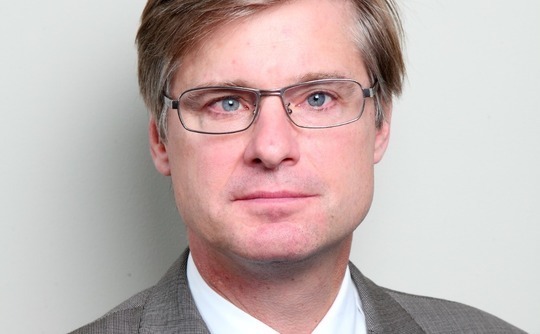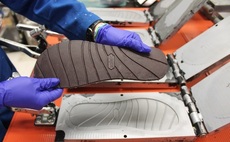
Profile: Navis Capital Partners' Nick Bloy & Rodney Muse
Nick Bloy and Rodney Muse have spent 18 years as managing partners of Navis Capital Partners. They see mutual respect, friendship and a consistent investment strategy as the key to this longevity
Over the course of more than two decades, the last 18 years of which have been spent at Navis Capital Partners, Nick Bloy and Rodney Muse have played thousands of games of Scrabble. "It used to be a very cash generative mechanism but for the last three or four years it's been a tough run. Maybe this is a super cycle that I'm going to play through," Muse says of his win record. "But it's a nice way to combat Alzheimer's as we age."
Though essentially trivial, this pursuit offers an insight into Navis' unusual longevity by Asian standards: few GPs in the region have been around for 18 years, and even fewer can claim a founding team that is still intact. Bloy and Muse play Scrabble on holiday and on weekends when they have been traveling; it often forms the backdrop to broader discussions about a buyout strategy that has evolved in step with Asia but remains as consistent in its core ethos as the relationship between the people who devised it.
"It's a combination of respect and friendship - without those you can be fellow travelers for a while but things tend to fall apart," says Bloy. "We are different personalities, and we might argue every day quite vociferously, but it's not done in a way where there are high personal stakes. It is easy to argue with friends because you don't worry about offending them; it is all about getting to the essence of an issue."
From BCG to PE
The relationship and much of the thinking behind the Navis approach to private equity was forged at Boston Consulting Group (BCG). Bloy had joined Bain & Company in London on completion of his MBA at INSEAD but then for personal reasons decided to relocate to Asia. It was 1989 and Bain's Asia presence was limited to Tokyo, so he opted for BCG, which was expanding aggressively in the region. Bloy spent time in almost every Asian market, but Southeast Asia was the primary focus.
Muse, meanwhile, arrived at BCG from Harvard Business School and was soon transferred from Boston to Sydney. "Nick had opened the Kuala Lumpur office and was looking for able bodies, so an email blast went out asking if anyone was interested in going to Malaysia for a couple of months," he recalls. "I'm always open to something like that and I put my hand up. What started as a three-month assignment in 1993 is now 24 years."
They worked alongside Richard Foyston, the head of BCG's Asia ex-Japan practice, who went on to co-found Navis before stepping back from the PE side in 2007 to focus on the firm's public equities business.
BCG's clients were predominantly multinational players keen on ramping up their presence in the region with a view to leveraging the mix of population growth, urbanization and rising disposable incomes. Muse describes the experience as "giving us tools we would use in private equity rather than giving us exposure to things we could do in private equity." They were consulting on market penetration, post-merger integration and inorganic growth initiatives for large companies, while at the same time identifying industries in which small and mid-size companies could potentially thrive.
The idea of folding this experience, skill set and industry knowledge into an investment platform was discussed internally at BCG during the 1990s. However, the onset of the Asian financial crisis in 1998 accelerated matters. Companies that were previously closed to outside investors suddenly started to open up, not because they were poor businesses but rather as a result of poor capital structuring decisions.
"Rick, Rodney and I concluded that BCG going into private equity may not happen soon but at least in Asia now was the time. That was the catalyst to make us think we could do it on our own," says Bloy. "We were supported by many of our former partners at BCG; almost 100 of them invested in us individually, committing $100,000-200,000 here and there. It was an important part of our initial funding."
Early winners
Not everyone was convinced that a control buyout strategy could work in Southeast Asia, where for decades families had resolutely held on to their assets, but the first Navis investment went a long way to proving the thesis. Duck processor Bangkok Ranch was on the brink of insolvency when the private equity firm acquired a majority stake in 1999. It was stabilized, expanded and sold to a group of investors including Rabobank several years later, generating a near 10x multiple.
Indeed, Navis returned to the company for a second helping in 2007, when one of the consortium members dropped out, and supported bolt-on acquisitions of Duck To Holdings, a Europe-based producer of deep-frozen Peking Duck, and genetics business Cherry Valley Farms. The processing operations were exited in 2013, while the genetics-related assets remain under Navis' ownership.
Another of the five investments from the $68 million Navis I was diaper manufacturer Drypers Asia - unusual in that it was bought via a liquidation auction in Texas in 2001, but ultimately fairly typical of the Navis approach to value creation. Working with the existing management team, the GP helped expand the Drypers footprint from Malaysia and Singapore to Thailand, the Philippines and Indonesia, taking market share from Procter & Gamble and Kimberly Clark. It was sold to SCA in 2004 for a 6x return.
"There was a period of time when we were called the ‘diaper guys,' so in that sense it was an instrumental deal," Muse says. "It is also a good example of Nick and myself complementing one another. He really drove much of the marketing and brand positioning, while I was responsible for the logistical and operational elements alongside management."

Navis has grown into a firm with eight offices, 60 investment professionals and $5 billion in assets under management. Its seventh fund, which launched in late 2013, closed at $1.5 billion, well ahead of the next largest GP in Southeast Asia in terms of fund size, although comparisons are difficult. While most Southeast Asia funds began with a single country focus, Navis was regional from the outset.
"We started out as a small regional player that was able to scale up as opposed to saying we are a country player trying to become a regional player," Bloy explains. "But you need to have people who speak the different languages and ideally have offices to underwrite the complexities of these investments. You can't sit in Singapore with a bunch of expats and say I'm going to take my company into Thailand without having a Bangkok office or at the very least professionals from those geographies."
Navis therefore occupies a relatively under-populated middle market in Southeast Asia: below the pan-Asian funds that predominantly operate out of Singapore and target the relatively few number of deals that meet their minimum check size requirements; and above the smaller sub-regional players that might not have the resources to establish a presence in every market.
At the same time, Navis does not restrict itself to Southeast Asia. Fund III, a 2001 vintage vehicle with a corpus of $86 million, saw the GP make its first forays into Australia and India; its successor, which closed four years later with more than three times as much capital, included the first investments in China. Not all plans have turned out as intended. India was dropped from Fund VII when it became clear that a control-oriented mid-market buyout strategy wasn't working.
"At some point it is only prudent to suck up the disappointment and drop it," says Bloy. "I think PE firms should always be in learning mode, because the environment changes and you have to learn what opportunities and challenges this throws up. For example, in the past we lost money by cashing out entrepreneurs in full on day one. Now we tell entrepreneurs that we can take 51% and work in partnership for the next five years and then sell together, ideally to a trade buyer."
Stepping up
The inflection point in the Navis story came in the mid-2000s as the firm started to generate meaningful interest from institutional LPs. Fund IV represented a more than three-fold increase on its predecessor and Fund V was the same again, taking the GP past $1 billion. The firm's sweet spot is now companies with enterprise valuations of $75-250 million: large enough to be significant players in their markets with professional management teams, but small enough not to appear on the radar of pan-Asian GPs.
"The step up in fund size is in essence treading water at the same deal size we have been doing for the last seven years. Due to the growth in these economies, something we would have paid $50 million for in 2010 is now worth $75 million," says Muse. "Typically the owners of those businesses are looking at alternatives outside of private equity for their capital needs so we have to compete against public markets, debt and other financial exercises. It is quite unusual for us to go head-to-head against private equity."
There are no plans to alter the current remit of Southeast Asia and Australia as the core markets with China addressed on an opportunistic basis, but Bloy and Muse are conscious of the fact that the dynamics within and between these geographies continue to evolve.
In China, for example, first generation entrepreneurs are approaching retirement, which is gradually delivering more control opportunities for private equity, while the economy is rebalancing from manufacturing to services. Modern Star, an Australia-based supplier of educational equipment to schools bought by Navis two years ago, recently acquired a related business in China in order to open up a new growth opportunity.
A similar dynamic is present in Southeast Asia. One of the standout deals from Fund V was King's Safetywear, for which Navis helped create value by making a bolt-on acquisition of a leading industrial boot brand in Australia and reducing supply chain costs, notably by relocating production from Eastern Europe to Asia. Bought for $62 million in 2008, it was sold to Honeywell International for $338 million in late 2011. This approach is still relevant, but the GP now also wants to help European companies tap Southeast Asia's growing consumer markets.
"There are European companies with great products and brands and Asia is the next chapter of value creation for them. They are too scared to do it on their own because of the complexities and the cultural barriers," says Bloy. "We've just bought the most amazing ultra-luxury brand in France. It needs to be where there is the most rapid growth in billionaires and centimillionaires, and that is in Asia. Our network and multicultural team can be of use to them."
In essence unchanged?
Throughout its 18-year history, Navis has never exited a company via the public markets, with trade sales to strategic buyers accounting for nine in 10 liquidity events. In this sense, however the nature of the targets might change, the ultimate objective does not. The question asked internally is what can be done to a company and industry to make it as strategically relevant as possible. Decisions on which levers to pull to create value all stem from there.
As such, both founders feel their philosophy is largely unchanged from 1998. "The questions about value creation remain: how to grow, how to cut costs and improve supply chain, whether to go cross-border, how to give customers more of what they want at the same price or ideally a lower price," says Bloy.
Of course, check sizes have increased, but so has the experience and knowledge base of those making the calls. A total of 14 partners comprise Navis' investment committee, including the three co-founders, and with each new fundraise a portion of the GP ownership transfers to non-founding partners as a means of preserving alignment of interest. When Navis first started, the founders referred to it as the "power of three" - if one had a weakness they were confident the strengths of the others would more than compensate. The principle remains, but now they try to apply it to a broader team.
Economics aside, consistency is also the key to stability. Muse describes Navis as a firm with a focused strategy that has improved incrementally as a result of frank assessment of successes and failures. This frankness, whether it crystallizes in discussions held over the Scrabble board or in the conference room, is only possible if underpinned by mutual respect.
"Nick is a very cerebral, creative guy, constantly identifying opportunities that we might not otherwise see if our focus is too granular. I am probably more operationally-oriented, less of a big thinker, a bit more hands on," Muse adds. "I think I know Nick better than anybody I know on Earth and I'm guessing vice versa. The strength of that, and the acceptance of one another's differences, is critical to success. You don't want a monoculture where everyone is cut from the same cloth."
Latest News
Asian GPs slow implementation of ESG policies - survey
Asia-based private equity firms are assigning more dedicated resources to environment, social, and governance (ESG) programmes, but policy changes have slowed in the past 12 months, in part due to concerns raised internally and by LPs, according to a...
Singapore fintech start-up LXA gets $10m seed round
New Enterprise Associates (NEA) has led a USD 10m seed round for Singapore’s LXA, a financial technology start-up launched by a former Asia senior executive at The Blackstone Group.
India's InCred announces $60m round, claims unicorn status
Indian non-bank lender InCred Financial Services said it has received INR 5bn (USD 60m) at a valuation of at least USD 1bn from unnamed investors including “a global private equity fund.”
Insight leads $50m round for Australia's Roller
Insight Partners has led a USD 50m round for Australia’s Roller, a venue management software provider specializing in family fun parks.







